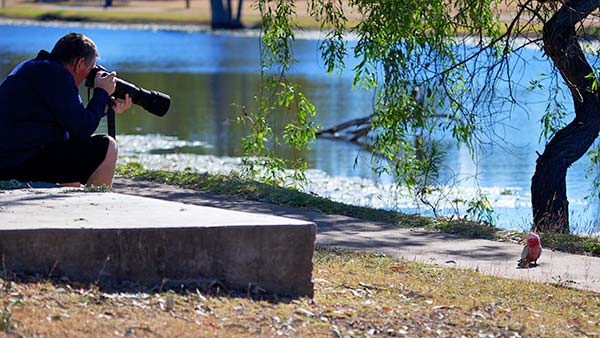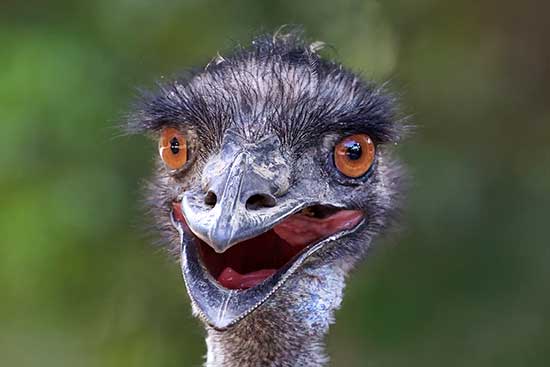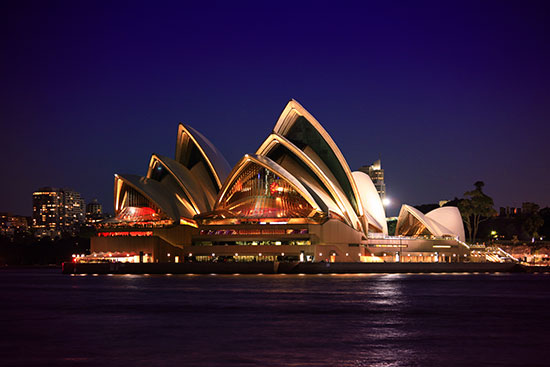A telephoto zoom lens is my favorite piece of glass. Over the years I’ve photographed with Canon, Nikon and Sigma telephoto zoom lens. Before we let you in on the secrets of using these long lenses, we’ll first discuss a couple of basics.
Definition of a telephoto zoom lens
A normal focal length is known to be 50mm. When you shoot with a lens set at 50mm focal length, the subject will be photographed in size as you saw it in real life. If you zoom your lens out to 100mm focal length, the image will now be magnified X 2 so the subject appears much closer. Therefore the definition of a telephoto zoom lens is one that can be magnified higher than 50mm focal length.
When photographers hear the term telephoto they usually imagine a long lens between 70 and 500mm focal length or longer. Personally I’ve used 3 different brands and the technique for using them is basically the same.
What are telephoto zoom lens used for?
Zoom lens are used for instances where you want to fill the frame with a subject that is far in distance and you wish it to appear much closer. Good examples would be sports or animal photography where you cannot be physically close to the subject. Or maybe it is possible but you’d rather not disturb the subject, choosing instead to photograph it naturally. This is particularly useful for street photography where you don’t want the person to know they are being photographed until after the shot is taken.
Wide angle lenses verses telephoto zooms
Using a telephoto zoom lens will totally change the overall feel of the image. Especially when photographing subjects that are further in distance from you. Not only does it bring the main subject closer, but it also brings all the background elements closer as well.
For example, I live in a coastal town where I photograph boats anchored out at sea with islands in the background. If I use a wide angle landscape lens, the islands in the background seem much smaller and insignificant than when I use my telephoto zoom lens. For these types of shots I prefer to see layers. Hence, I’ll use my telephoto zoom lens.
Tips for using a telephoto zoom lens
All lenses require different techniques for photographers to grasp. Just because you know how to use one lens doesn’t mean you can use the same technique on the next. As strange as it sounds, telephoto and macro lenses have a lot in common. Personally I treat them much the same way.
Aperture settings
- The closer you are to the subject, the higher you need to increase your camera aperture setting. This is especially true for instances where you zoom the lens out to its longest focal length and fill the frame with subjects that are not flat.For example, when I am at the zoo photographing animals with long noses or beaks and I zoom the lens out to its longest focal length, I set my camera aperture to f/8. This ensures the nearest facial part and the eyes are both in focus.
- The less you fill the frame with the main subject, the lower you can set your aperture f-number. For example if the subject takes up only half of the scene when looking through your rear vision, then setting the lowest f-number possible will result in an object that is fully in focus (depending on other factors of course).
- When you set your focal point on a distant subject, use a low aperture f-number. This will result in a sharp shot as your camera will shoot quickly. A good example of this would be if you were photographing the moon or a plane in the sky.
Shutter speed settings for hand held shots verses tripods
Just because it’s a long lens doesn’t mean you need to use a tripod. In fact I rarely use a tripod when using my telephoto lens. I find them too restrictive when photographing birds and wildlife.
However you do need to make sure your shutter speed is longer than the focal length of the lens. For example, when you zoom your lens out to 200mm, make sure the shutter speed is at minimum 1/200th of a second or faster. If you zoom it to 300mm focal length, then the shutter speed needs to be at least 1/300th of a second and so forth. This will give you the best chance of getting a sharp image while hand holding your camera.
Vibration Reduction (VR for Nikon) and Image Stabilization (IS for Canon)
If you are photographing long exposures or landscapes with a telephoto lens then it is best to use a tripod. If using a tripod, look on the side of your lens for letters VR (vibration reduction for Nikon) or IS (image stabilization for Canon) and turn them off.
The first time I used my Canon EF 70-200mm f/4L USM lens on a tripod, was to photograph beautiful night shots of the Opera House in Sydney. Looking at the images on my computer I saw they were all out of focus and appeared to have symptoms of camera shake. I later found that by keeping this switch turned on, VR / IS will look for camera vibration and when it doesn’t find it, it keeps looking. Hence in itself causing camera shake. So I went out the next night with IS turned off and captured the image seen below.
Focus limit switch
Look on the side of your lens and check if it has a focus limit switch. You will recognize it because it will have a distance metering associated with it. For example my Canon lens has a switch on the side that says 1.8m -∞, as well as 6.5m-∞. If your lens doesn’t have this switch then ignore this section.
The focus limit switch tells the camera where to focus within certain ranges in distance. For example, if you set the switch to 6.5m-∞ then the camera knows not to worry about focussing on anything closer than 6.5 meters. Knowing this information, your camera will shoot faster.
Why is this important to know? There has been many instances where I’ll be trying to photograph a subject that is only a few meters from me and the lens keeps swimming in and out, not able to focus. I’ve fixed this problem every time by setting the correct metering. ie I set 1.8m -∞ for subjects closer than 6.5 meters away, and set 6.5m-∞ for everything 6.5 meters or further in distance.
How to blur backgrounds
Blurring backgrounds is easier with a telephoto lens than it is with a wide angle lens. Set your camera aperture on f/8 or lower, zoom the lens out to its longest focal length, and get as close to the subject as possible while still being able to focus. You also need to ensure as much distance as possible between the subject and any background elements. You won’t see any blur if the subject is against a brick wall.
Shooting macros with a long telephoto lens
Long telephoto zoom lenses are perfect for photographing macro subjects. They allow you to stand further away from the subject so not to scare it away. This has its obvious advantages when shooting timid subjects like dragonflies and insects.
Sign-up for our online photography course and learn how to master your digital camera in easy to understand “at your own pace” lessons.
Click here for more information and sign-up details!


